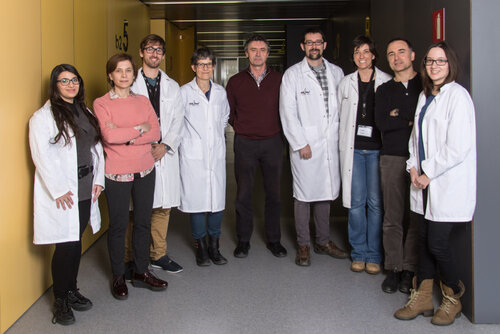Researchers from Lleida seek new therapeutic strategies in the treatment of Friedreich's ataxia
Today, February 28th, the International Day of Minority Diseases is commemorated.
The Oxidative Stress Biochemical Research Group, of the University of Lleida (UdL) and the Biomedical Research Institute of Lleida (IRBLleida), is carrying out a new project to better understand Friedreich's ataxia, caused by frataxin deficiency , a mitochondrial protein. Friedreich's ataxia is a minority disease that affects approximately two people in 100,000, and for which, currently, there is no effective cure. Therefore, this project pursues new therapeutic strategies applicable to the treatment of Friedreich's ataxia. Today, February 28th, the International Day of Minority Diseases is celebrated, including Friedreich's ataxia.
Friedreich's ataxia is characterized by a progressive lack of coordination in movement, initiated before the age of 25 years. The first symptoms tend to appear during pre-adolescence and they get worse with age. Normally, before the age of 20, people who suffer from the disease already have to use a wheelchair. It is believed that the deficit of frataxin negatively affects the correct distribution of intra-mitochondrial iron, which generates an excess of free radicals and the consequent oxidative stress that, over time, will eventually cause cell death. The Lleida research team believes that the alteration of mitochondrial calcium can play a crucial role in the development of the disease.
To carry out the research, the Group, led by UdL professor Joaquim Ros, has recently offered a predoctoral fellowship to incorporate a new person into his team. This scholarship, associated to the project "Targeting mitochondria in Friedreich Ataxia: molecular mechanisms and therapeutic approaches (MIFAMOTHER)", is part of the policy of fellows for projects of the UdL. It lasts three years and will allow to study and better understand the effects of frataxin deficiency and, therefore, offer data to design better therapeutic strategies for Friedreich's ataxia.
The Oxidative Stress Biochemical Research Group investigates this minority disease since 2005. In 2011, it obtained a research project from the La Marató Foundation of TV3 (led by Jordi Tamarit), and also, currently, has a support of the association Ataxia UK, of the United Kingdom, cofinanced by the Association of Catalan Ataxias (ACAH). The results of the previous projects have provided new data in the processing of mitochondrial proteins and alterations in metabolism. Therefore, in the present project, the proposed objectives seek to find answers to know which are the mechanisms that explain the neurocardiodegenerative effects of frataxin deficiency and what is the ability to reverse these effects of some compounds, which can be proposed to treat the Friedreich ataxia.
International Day of Minority Diseases
February 28 marks the International Day of Minority Diseases. The objective of this Day, promoted by the European Organization of Minority Diseases (EURORDIS), is to publicize rare diseases and position them as a social and health priority. Minor diseases are serious, rare and affect 5 out of every 10,000 people. There are more than 7,000 diseases, 80% of which are of genetic origin. They usually involve different organs and affect the physical capacities, mental abilities and sensory and behavioral qualities of the patients. They can appear from birth or childhood, but there are some that do not manifest until adulthood.







